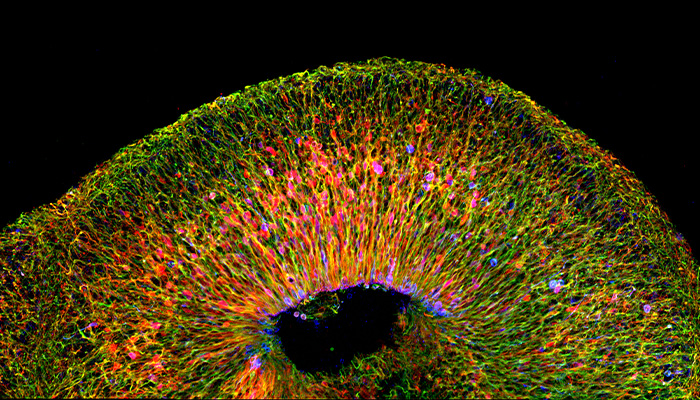HOW CAN WE HELP YOU? Call 1-800-TRY-CHOP
Qian Laboratory Research Overview

Organoids mimic the intricate structural organization of the developing human brain.
Here are some examples of the projects — some already underway, others launching soon — that the Qian Lab team is excited to pursue:
Expanding the Developmental Atlas of the Human Cortex
While the current atlas is already massive, it is still far from complete. So far, this work has focused on mid-gestation, but there's so much more to explore: earlier developmental windows, later stages like the neonatal period, and additional cortical areas that have yet to be mapped. Filling in these gaps will provide a richer, more continuous view of cortical development.
Engineering Next-generation Organoids That Mimic Specific Cortical Areas
Research in this field has focused on producing generic cortical organoids for years, but the cortex is not one uniform structure. The lab's spatial data offers a unique opportunity to benchmark and improve organoids, so they resemble distinct cortical areas with much higher fidelity. This is important because neurodevelopmental disorders often affect particular regions of the cortex. Recreating those areas in the lab puts scientists in a stronger position to study disease mechanisms.
Using Organoids as Platforms for Disease Modeling
Scientists have discovered a long list of genes associated with developmental brain disorders, and are still working to determine exactly how many of them work. With CRISPR and organoids, researchers can now build efficient, scalable models to interrogate these genes and dissect their function. These systems can even be used to assess therapeutic interventions, helping to bridge the gap between discovery and application.
Analyze Human Disease Tissue With Spatial Transcriptomics.
Children's Hospital of Philadelphia, like other institutions, has decades' worth of formalin-fixed paraffin-embedded brain tissue samples, carefully preserved and stored for future study as new tools become available. With spatial transcriptomics, scientists can finally extract meaningful molecular insights from these neuropathological time capsules through analysis alongside matching controls.
This technological advancement enables researchers to uncover the underlying pathology and pathogenesis with precision not previously achievable. Pairing these analyses with organoid models enables investigators to formulate and test mechanistic hypotheses that link pathology to development.